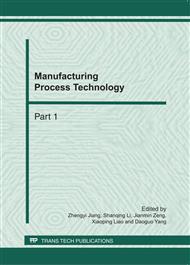p.1997
p.2001
p.2005
p.2009
p.2013
p.2019
p.2025
p.2032
p.2037
A Numerical Study on the Uplift Behavior of Under-Reamed Anchors in Silty Sand
Abstract:
Ground anchors are common to be employed in geotechnical engineering. Under a limited space of an urban district or a restricted thick of an anchored stratum, an under-reamed anchor could meet both the requirements of a short length and a high anchorage capacity. To investigate the anchorage mechanism of the anchor, a series of triaxial tests was performed to obtain the parameters demanded for a constitutive model, SHASOVOD (A continuous strain hardening/ softening and volume dilatancy model for cohesionless soil during stressing). A numerical program was then developed to study the uplift behavior of the under-reamed anchor in silty sand. Analyzing results show that, for two under-reamed anchors located in different test sites, the complete load-displacement curves estimated numerically were consisted with those measured from the field test. The total load, friction load and end bearing do not reach their peaks simultaneously. According to the behavior of the end bearing, a critical overburden depth H of 6D was found to classify an under-reamed anchor as a shallow anchor or a deep anchor.
Info:
Periodical:
Pages:
2013-2018
Citation:
Online since:
February 2011
Authors:
Keywords:
Price:
Сopyright:
© 2011 Trans Tech Publications Ltd. All Rights Reserved
Share:
Citation:


